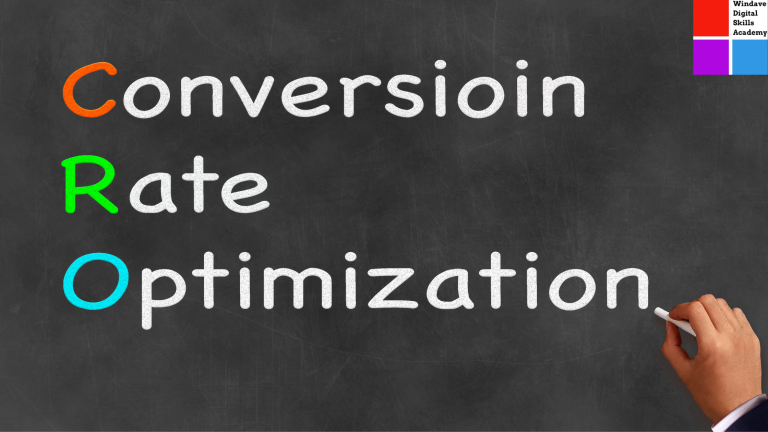What is the difference between marketing and advertising? There is always confusion with the terms “marketing” and “advertising”. The words are different, yet related. Please don’t be confused. 🙂
As a marketer, it’s important to know the difference in the case of pitching, and also good for business owners when explaining their business strategy or proposals.
Let’s learn the difference between marketing and advertising, their similarities, and how to apply them strategically.
What is Marketing?
Table of Contents
Marketing is promoting, selling, and distributing a product or service. It encompasses a range of activities aimed at understanding consumer needs, creating value, and fostering customer relationships to achieve organizational goals. Marketing is both an art and a science that involves research, strategy, communication, and analytics. The core objective is to attract and retain customers by offering superior value and satisfying their needs better than competitors.
Types of Marketing
Traditional Marketing:
Print Marketing: Newspapers, magazines, brochures, and flyers.
Broadcast Marketing: Television and radio advertisements.
Direct Mail Marketing: Physical mail sent to potential customers.
Telemarketing: Promotional activities conducted via telephone.
Digital Marketing:
Search Engine Optimization (SEO): Improving website visibility on search engines.
Content Marketing: Creating valuable content to attract and engage an audience.
Social Media Marketing: Promoting products through social media platforms.
Email Marketing: Sending promotional messages via email.
Pay-Per-Click (PPC) Advertising: Paying for ad clicks on search engines and other platforms.
Affiliate Marketing: Partnering with other businesses or individuals to promote products.
Inbound Marketing:
Focuses on attracting customers through relevant and helpful content and adding value at every stage in the customer’s buying journey. Potential customers find you through channels like blogs, search engines, and social media.
Outbound Marketing:
Pushes messages out to potential customers, regardless of their interest in the product. Includes traditional methods like cold calling, direct mail, and TV/radio ads.
Relationship Marketing:
Emphasizes customer retention and satisfaction rather than sales transactions. It involves continuous engagement with customers and building long-term relationships.
Influencer Marketing:
Leveraging influencers with a significant following to promote products. These influencers can sway their audience’s purchasing decisions.
Guerrilla Marketing:
Utilizes unconventional, low-cost marketing tactics to achieve maximum exposure and impact.
B2B Marketing:
Business-to-business marketing involves selling products or services from one business to another.
B2C Marketing:
Business-to-consumer marketing involves selling products or services directly to consumers.
Learn about Different Marketing Terms in Business
What is Advertising?
Advertising is a subset of marketing that involves paid media to communicate a message intended to promote or sell a product, service, or idea. The primary goal of advertising is to influence consumer behavior and drive sales. It includes creating messages that reach potential customers through various channels, such as television, radio, print, online, and outdoor media.
Types of Advertising
Traditional Advertising:
Print Advertising: Ads in newspapers, magazines, brochures, and billboards.
Broadcast Advertising: Television and radio commercials.
Outdoor Advertising: Billboards, transit ads, and posters.
Digital Advertising:
Display Advertising: Banner ads on websites.
Social Media Advertising: Paid ads on social platforms like Facebook, Instagram, and Twitter.
Search Engine Advertising: Ads displayed in search engine results (Google Ads).
Video Advertising: Ads played before, during, or after online videos.
Native Advertising: Ads that match the look, feel, and function of the media format in which they appear.
Mobile Advertising:
Ads specifically designed for mobile devices, including in-app ads and SMS marketing.
Guerrilla Advertising:
Innovative, unconventional, and low-cost tactics aimed at gaining maximum exposure.
Native Advertising:
Ads that are seamlessly integrated into the platform on which they appear, such as sponsored articles or videos.
Differences between Marketing and Advertising
Scope:
Marketing: Encompasses a range of activities including market research, product development, pricing, distribution, and customer relationship management.
Advertising: A specific component of marketing focused on creating and delivering messages through paid media.
Objective:
Marketing: Aim to meet customer needs and achieve long-term organizational goals.
Advertising: Aims to create awareness, generate interest, and drive immediate sales.
Strategies and Tactics:
Marketing: Involves multiple strategies and tactics such as segmentation, targeting, positioning, and the marketing mix (product, price, place, promotion).
Advertising: Involves crafting specific messages and selecting appropriate media channels to reach target audiences.
Time Frame:
Marketing: Long-term approach focusing on building relationships and brand loyalty.
Advertising: Often a short-term, campaign-based approach focusing on immediate impact and results.
Interaction with Customers:
Marketing: More interactive, involving engagement through various channels like social media, customer service, and feedback systems.
Advertising: Primarily one-way communication designed to inform and persuade the audience.
Similarities between Marketing and Advertising
Goal Alignment:
Both aim to promote products, services, or ideas to attract and retain customers.
Customer Focus:
Both are centered on understanding and satisfying customer needs and preferences.
Brand Building:
Both contribute to building and maintaining brand image and reputation.
Use of Media:
Both utilize various media channels to reach and engage target audiences.
Measurement and Analytics:
Both require metrics and analytics to measure effectiveness and optimize strategies.
How to Plan a Marketing Strategy
Market Research:
Conduct thorough research to understand the market environment, including competitors, customer demographics, needs, preferences, and buying behavior.
Define Objectives:
Set clear, measurable goals aligned with the overall business objectives. These could include increasing market share, enhancing brand awareness, or entering new markets.
Segmentation, Targeting, and Positioning (STP):
Segment the market based on demographics, psychographics, behavior, or geography.
Target specific segments that are most likely to purchase your product.
Position your product to highlight its unique benefits and differentiate it from competitors.
Marketing Mix (4 Ps):
Product: Develop or refine products to meet customer needs.
Price: Set competitive pricing strategies that reflect the value proposition.
Place: Determine distribution channels to make the product accessible.
Promotion: Plan promotional activities, including advertising, sales promotions, public relations, and digital marketing.
Budget Allocation:
Allocate budget across different marketing activities and channels based on priorities and expected returns.
Implementation:
Execute the marketing plan through coordinated efforts across various departments, ensuring alignment and consistency.
Monitoring and Evaluation:
Continuously monitor performance using key performance indicators (KPIs) and adjust strategies based on feedback and results.
How to Plan an Advertising Strategy
Set Advertising Goals:
Define what you want to achieve with your advertising campaign. Goals could include increasing brand awareness, generating leads, boosting sales, or launching a new product.
Identify Target Audience:
Understand who your target audience is, including their demographics, interests, and media consumption habits.
Budgeting:
Determine the budget for the advertising campaign. This includes deciding how much to spend and how to allocate funds across different channels.
Message Creation:
Develop compelling and clear messages that resonate with your target audience. Ensure that the message aligns with your brand identity and campaign goals.
Choose Advertising Channels:
Select the most effective channels to reach your target audience. This could include traditional media (TV, radio, print) or digital media (social media, search engines, websites). How to advertise on Facebook
Creative Development:
Design and produce advertisements. This might involve creating visuals, writing copy, producing videos, and designing interactive ads.
Media Planning and Buying:
Plan the media schedule and buy ad space on chosen platforms. This involves deciding on ads’ timing, frequency, and placement to maximize reach and impact.
Launch and Monitor:
Launch the advertising campaign and monitor its performance. Use analytics tools to track metrics such as impressions, clicks, conversions, and ROI.
Evaluate and Optimize:
Assess the results against the goals and make necessary adjustments to improve the effectiveness of the campaign. This might involve tweaking the message, changing the media mix, or reallocating the budget.
Leveraging Marketing and Advertising for Business Growth
Integrated Approach:
Ensure marketing and advertising strategies are integrated and aligned with overall business goals. A cohesive approach ensures that all efforts work together to create a unified brand experience.
Brand Consistency:
Maintain a consistent brand message across all marketing and advertising channels. This builds trust and recognition among customers.
Customer-Centric Strategies:
Focus on creating value for customers at every touchpoint. Understanding and addressing customer needs and preferences can lead to increased satisfaction and loyalty.
Utilize Data and Analytics:
Leverage data to gain insights into customer behavior, campaign performance, and market trends. Use this information to make informed decisions and optimize strategies.
Adapt to Market Changes:
Stay agile and responsive to changes in the market environment. Continuously monitor trends, competitors, and customer feedback to adapt strategies accordingly.
Innovation and Creativity:
Innovate in your marketing and advertising approaches. Creative and unique campaigns can capture attention and differentiate your brand in a crowded marketplace.
Cross-Promotion:
Use advertising to promote marketing activities (like events, promotions, or new content) and vice versa. This amplifies the reach and impact of both efforts.
Leverage Digital Channels:
Utilize digital channels for targeted, cost-effective, and measurable marketing and advertising. Platforms like social media, search engines, and email marketing offer opportunities to engage with specific audience segments.
Customer Engagement and Relationship Building:
Engage with customers through interactive and personalized marketing efforts. Build long-term relationships through excellent customer service, loyalty programs, and consistent communication.
Measure and Refine:
Regularly assess the performance of marketing and advertising initiatives. Use KPIs and other metrics to measure success and refine strategies for continuous improvement.
Conclusion
Marketing and advertising are essential components of a business’s growth strategy. While marketing encompasses a wide range of activities aimed at creating value and building relationships, advertising focuses on communicating specific messages through paid media to drive immediate sales. When strategically planned and executed, both disciplines can significantly contribute to achieving business objectives. Integrating marketing and advertising efforts, maintaining brand consistency, leveraging data, and staying adaptable to market changes are key to leveraging these strategies for business growth.
Remember to share and follow for more digital marketing content.
Register for a digital marketing course to skyrocket your business high in the online space.




